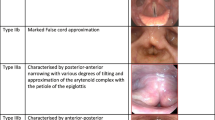Vocal characteristics of therapists, including voice volume, pitch and timbre of speech, and rate of speech have been hypothesized to facilitate the therapeutic process, particularly during procedures like progressive relaxation training (PRT). Very little empirical work, however, has examined the relation between vocal characteristics and treatment process or outcome. The purpose of this study was to examine the role of vocal characteristics during a single session of PRT applying technological innovations devised for speech pathology and audiology settings for evaluating therapist's vocal characteristics. Forty-eight high anxious young adult women were randomly assigned to one of four conditions for training: PRT with the recommended therapist voice (RV) that decreased in tone, volume, and rate across the session, PRT with conversational therapist voice during the session (CV), a credible treatment control called systematic self-relaxation (SR), or no treatment control (NT). All subjects participated in a single PRT session during which heart rate, EMG, self-report measures of tension (SRT) and anxiety, and treatment credibility ratings were obtained. Results revealed significant reductions in SRT, self-reported anxiety, and heart rate for participants in all groups. Only the RV group displayed significant reductions in EMG when compared with the other three groups. Participants in the RV group also rated the therapist's voice as “more facilitating” of relaxation when compared to the CV group. These results suggest that methods employed for evaluating the quality of vocal characteristics in speech and audiology clinics may be useful for evaluating the quality of therapist's voice when conducting PRT.

Similar content being viewed by others
References
Bady, S. L. (1985). The voice as a curative factor in psychotherapy. Psychoanalytic Review, 72, 479–490.
Bernstein, D. A., & Borkovec, T. D. (1973). Progressive relaxation training: A manual for the helping professions. Champaign, IL: Research Press.
Bernstein, D. A., Borkovec, T. D., & Hazlett-Stevens, H. (2000). New directions in progressive relaxation training: A guidebook for helping professionals. Westport, CT: Praeger Publishers.
Boone, D. R. (1977). The voice and voice therapy. Englewood Cliffs, NJ: Prentice-Hall.
Crits-Christoph, P., Luborsky, L., Kron, R., & Fishman, H. (1978). Blood pressure, heart rate and respiratory responses to a single session of relaxation: A partial replication. Journal of Psychosomatic Research, 22, 493–501.
Curtis, J. D., Detert, R. A., Schindler, J., & Zirkel, K. (1985). Teaching stress management and relaxation skills: An instructors guide. LaCrosse, WI: Coulee Press.
Davis, M. C., Matthews, K. A., & Twamley, E. W. (1999). Is life more difficult on Mars or Venus? A meta-analytic review of sex differences in major and minor life events. Annals of Behavioral Medicine, 21, 83–97.
Horii, Y. (1983). Automatic analysis of voice fundamental frequency and intensity using a visi-pitch. Journal of Speech and Hearing Research, 26, 467–471.
Jacob, R. G., Wing, R., & Shapiro, A. P. (1987). The behavioral treatment of hypertension: Long-term effects. Behavior Therapy, 18, 325–352.
King, N. J. (1980). The therapeutic utility of abbreviated progressive relaxation: A critical review with implications for clinical practice. In Hersen, M., Eisler, R. M., & Miller, P. M. (Eds.), Progress in behavior modification (Vol. 10). New York: Academic Press.
LaBlance, G. R., Steckol, K. F., & Cooper, M. H. (1991). Advances in non-invasive measures of vocal acoustics. Ear, Nose, and Throat Journal, 70, 678–684.
Lehrer, P. M., Batey, D. M., Woolfolk, R. L., Remde, A., & Garlick, T. (1988). The effect of repeated tense-release sequences on EMG and self-report of muscle tension: An evaluation of the Jacobsonian and post-Jacobsonian assumptions about progressive relaxation. Psychophysiology, 25, 562–569.
Lehrer, P. M., & Woolfolk, R. L. (1984). Are stress reduction techniques interchangeable, or do they have specific effects?: A review of the comparative empirical literature. In Woolfolk, R. L., & Lehrer P. M. (Eds.), Principles and practice of stress management (pp. 404–477). New York: Guilford.
Morris, R. J., & Suckerman, K. R. (1974). Therapist warmth as a factor in automated systematic desensitization. Journal of Consulting and Clinical Psychology, 42, 244–250.
Nietzel, M. T., & Bernstein, D. A. (1981). Assessment of anxiety and fear. In Hersen, M., & Bellack A. S. (Eds.), Behavioral assessment: A practical handbook (2nd ed.). New York: Pergamon Press.
Obrist, P. A. (1981). Cardiovascular psychophysiology: A perspective. New York: Plenum Press.
Reinking, R. H., & Kohl, M. L. (1975). Effects of various forms of relaxation training on physiological and self report measures of relaxation. Journal of Consulting and Clinical Psychology, 43, 595–600.
Riddick, C., & Meyer, R. G. (1973). The effect of automated relaxation training with response contingent feedback. Behavior Therapy, 4, 331–337.
Ryan, V. L., & Moses, J. A. Jr. (1979). Therapist warmth and status in the systematic desensitization of test anxiety. Psychotherapy: Theory, Research and Practice, 16, 178–184.
Sanderson, R. J., Anderson, S. J., Denholm, S., & Kerr, A. I. (1993). The assessment of alaryngeal speech. Clinical Otolayngology and Allied Sciences, 18, 181–183.
Spielberger, D. D., Gorsuch, R. L., & Lushene, R. E. (1970). Manual for the state-trait anxiety inventory. Palo Alto, CA: Consulting Psychologists Press.
Wilson, D. K. (1979). Voice problems of children (2nd ed.). Baltimore: Williams and Wilson.
Wittrock, D. A., Blanchard, E. B., & McCoy, G. C. (1988). Three studies on the relation of process to outcome in the treatment of essential hypertension with relaxation and thermal biofeedback. Behaviour Research and Therapy, 26, 53–66.
Author information
Authors and Affiliations
Corresponding author
Rights and permissions
About this article
Cite this article
Knowlton, G.E., Larkin, K.T. The Influence of Voice Volume, Pitch, and Speech Rate on Progressive Relaxation Training: Application of Methods from Speech Pathology and Audiology. Appl Psychophysiol Biofeedback 31, 173–185 (2006). https://doi.org/10.1007/s10484-006-9014-6
Published:
Issue Date:
DOI: https://doi.org/10.1007/s10484-006-9014-6




